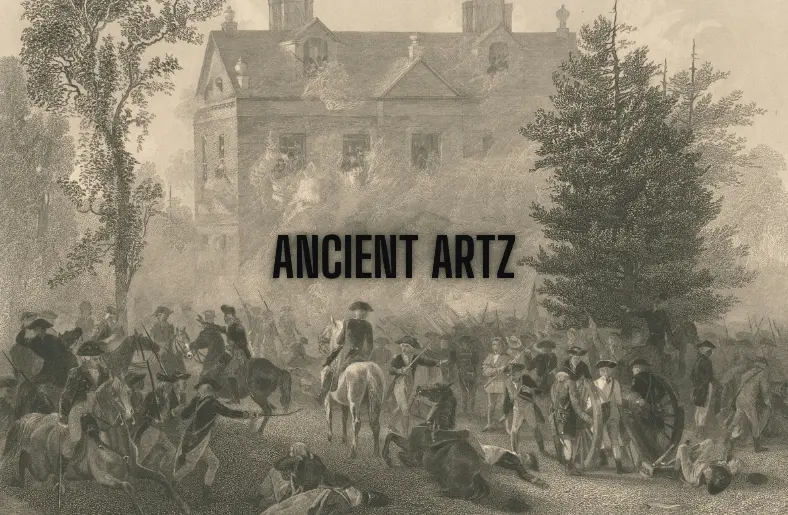Ancient artz represents the creative expressions of early civilizations, offering a fascinating glimpse into our past. Through diverse forms like sculpture and painting, we learn about the beliefs and values of these cultures. Each artwork provides a window into different ways of life, reflecting technological advancements and creativity. Ultimately, ancient artz connects us to our ancestors and shapes our cultural identity, inviting us to explore the richness of our shared heritage.
What is Ancient Artz?
Ancient artz refers to artistic creations from past civilizations. These works include paintings, sculptures, and pottery. Moreover, they reflect the values and beliefs of their cultures. For instance, cave paintings depict early human life and activities. Similarly, Egyptian art illustrates religious practices and afterlife concepts. Transitioning to Greek art, it showcases human beauty and perfection. Thus, ancient artz is a vital connection to our cultural heritage and history.
Significance of Ancient Artz
They holds immense significance for various reasons. First, it connects us to our cultural roots. Additionally, it reveals insights into historical events and societal values. Furthermore, these artworks inspire modern artists in their creative processes. They also showcase the technological advancements of their time. By studying ancient artz, we gain perspectives on human experience. Ultimately, preserving this art is crucial for future generations to understand our shared heritage.
Key Elements
- Cultural Symbolism
Ancient artz often reflects the beliefs and values of a society. Symbols represent deities, myths, and community ideals. Thus, understanding these symbols helps us grasp the cultural context and meaning behind the artworks. - Religious Significance
Many ancient artworks were created for religious purposes. They depict gods, rituals, and sacred spaces. Consequently, these pieces provide insights into spiritual practices and the importance of faith in everyday life. - Natural Representation
Artists aimed to capture the natural world. They depicted animals, landscapes, and human figures with varying accuracy. This focus showcases the relationship between humans and their environment, revealing their observations and interpretations. - Functional Purpose
They often served practical functions beyond aesthetics. For example, pottery and tools were decorated for both utility and beauty. This dual purpose highlights how art intertwined with daily life and culture. - Technological Innovation
Ancient civilizations employed innovative techniques in their art creation. From sculpting to painting, these methods advanced over time. Therefore, examining these technologies reveals the creativity and resourcefulness of ancient artists.
Diversity of Ancient Artz Across Civilizations
They showcase a rich variety across different civilizations. Each culture expressed its identity uniquely. For instance, Egyptian art emphasized life after death, while Greek art celebrated human beauty. In Mesoamerica, vibrant colors and intricate designs reflected cosmology. Similarly, Mesopotamian art often highlighted political power and religious beliefs.
Moreover, Chinese art integrated philosophy and spirituality, showcasing harmony with nature. Thus, the diversity of ancient artz reveals distinct worldviews and values.
Consequently, studying these variations enriches our understanding of human creativity. It also highlights how cultures influenced one another over time. Overall, They serve as a testament to humanity’s shared heritage.
Preserving
It is essential to preserve historical art to preserve cultural heritage. First, archaeologists carefully excavate sites to protect valuable artifacts and ensure their historical context remains intact. Museums also play a significant role by creating controlled environments to safeguard these works. Additionally, advanced restoration techniques help repair damaged pieces, ensuring they last for future generations. Public awareness campaigns engage communities in preservation, fostering a sense of shared responsibility. Ultimately, preserving ancient artz strengthens our connection to history and enriches our cultural identity.
Impact of Ancient Artz on Modern Art
They profoundly influences modern art. First, artists draw inspiration from historical techniques and themes. For instance, sculptures often echo classical styles, reflecting beauty and proportion. Furthermore, symbolism from ancient works continues to resonate in contemporary creations. Additionally, modern artists explore cultural narratives rooted in ancient traditions. As a result, this connection fosters a dialogue between past and present. Ultimately, ancient artz enriches today’s artistic expressions, shaping how we perceive and appreciate art across cultures.
Also Read: ArcyArt Artists Directory
Conclusion
In summary, They offers valuable insights into human history. First, it connects us with diverse cultures. Additionally, it highlights the creativity and innovation of past civilizations. Moreover, They continue to inspire modern artists today. As a result, its significance remains relevant in our lives. Ultimately, preserving this art form ensures future generations can appreciate it. Therefore, understanding ancient artz is essential for recognizing our shared heritage and cultural identity.




